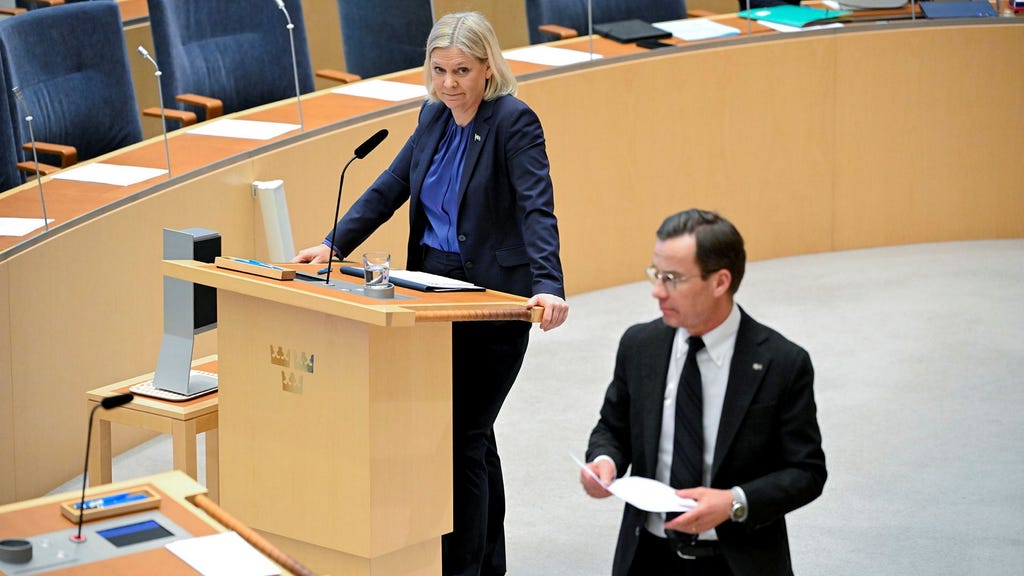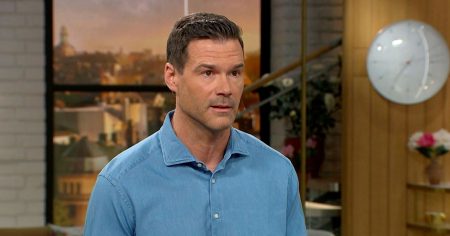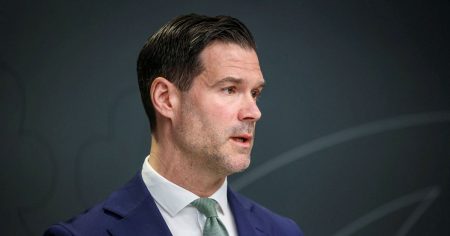The pursuit of lower unemployment rates has become a Sisyphean task for Swedish politicians, with promises often exceeding tangible results. Stefan Löfven’s ambition to achieve the EU’s lowest unemployment, a pledge born in the halls of the Social Democratic Party headquarters, ultimately fell flat. The complexities of comparing national statistics, particularly given Sweden’s higher per capita intake of refugees compared to other EU countries, rendered the goal unattainable. A decade later, Sweden finds itself grappling with one of the highest unemployment rates in the EU, a stark contrast to Löfven’s initial vision. This illustrates the inherent difficulty of predicting and controlling complex socio-economic factors, even with the best intentions.
The current Prime Minister, Ulf Kristersson, faces a similar challenge, albeit with a less ambitious pledge of revitalizing the ”work line.” This conservative principle emphasizes the importance of work and aims to reduce reliance on unemployment benefits. Kristersson’s strategy involves tightening access to benefits and simultaneously lowering taxes for those employed, a policy echoing the legacy of former Prime Minister Fredrik Reinfeldt. However, the Tidö Agreement, the governing coalition’s policy platform, adds a new dimension to this approach by focusing on reducing unemployment among immigrants, particularly foreign-born women. Despite these efforts, government projections suggest limited impact, revealing the persistent difficulty of effectively addressing unemployment, even with targeted interventions.
An analysis of unemployment trends over time reveals a stubborn consistency: rates remain relatively high irrespective of the ruling party’s political affiliation. This points to a deeper issue at play: the potential limitations of political influence on job creation. This realization presents a significant hurdle for Magdalena Andersson, leader of the Social Democrats, who faces the arduous task of reconciling the differing perspectives within her coalition government. The Centre Party, advocates of the recent Arbetsförmedlingen (Swedish Public Employment Service) reforms, must find common ground with the Left Party, its staunch critics. This internal political struggle highlights the complexities of navigating policy differences within a coalition while addressing the persistent challenge of unemployment.
The Swedish political landscape is characterized by a perennial debate over employment, a key dividing line between the left and right. Every party seeks a definitive solution, yet the effectiveness of political interventions remains questionable. Numerous strategies have been implemented over the years, from job coaching and fast-track training programs to tax cuts for workers and reduced employer contributions. Even a complete overhaul of the Arbetsförmedlingen, incorporating private actors into the job-seeking process, yielded disappointing results, as the independent Institute for Evaluation of Labour Market and Education Policy (IFAU) concluded that the reforms increased costs without lowering unemployment. This raises a fundamental question: are political interventions truly impactful in creating jobs, or are other forces at play?
The evolving public perception of which political side is best equipped to tackle unemployment further complicates the matter. Historically, the Social Democrats held public trust on this issue, but the pendulum swung towards the Alliance parties during their time in power. Now, with the 2026 election on the horizon, both left and right coalitions face the critical task of demonstrating the effectiveness of their policies. The recurring theme of unfulfilled promises underscores the persistent challenge of translating political rhetoric into concrete improvements in the labor market. The quest for a successful formula to combat unemployment remains an ongoing struggle, demanding both innovative solutions and a realistic assessment of the limits of political influence.
In conclusion, the issue of unemployment in Sweden presents a complex and persistent challenge for policymakers across the political spectrum. Grand promises and targeted interventions often fall short of expectations, highlighting the limitations of political influence on the intricate dynamics of the labor market. The persistent nature of high unemployment rates, regardless of the ruling party, suggests that deeper structural issues may be at play. The upcoming 2026 election will serve as a crucial testing ground for the competing approaches of the left and right coalitions, demanding tangible results and demonstrably effective policies to address this enduring societal concern. The search for a truly impactful solution remains a central focus of Swedish political discourse.














